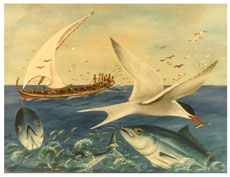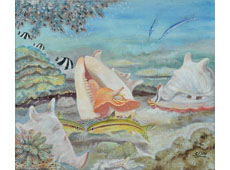Boduberu, a combination of singing, dancing and rhythmic drumming, is held up as one of the most high-profile examples of Maldivian culture. As an art-form, it is commonly performed before tourists staying at the Maldives’ secluded island resorts as an attempt to give an insight into local culture from the carefree vantage of a high-end holiday.
Yet beyond its significance to the holiday industry and cultural organisations, boduberu is serious business – not least for for the eight teams that on Saturday (September 1) night contested in this year’s Four Seasons Saqaafee Vaadha tournament on the island of Kamadhoo.
Held barely five minutes by speedboat from one of Baa Atoll’s most high-profile resorts, the tournament saw teams representing the islands of Kendhoo, Kurendhoo, Holhudhoo, Kudafari, Dhivaafaru, Meedhoo, Madduvary and Rasmaadhoo competed for a grand prize of MVR 100,000 to help fund development projects for their respective local communities. A further MVR 10,000 in prize money was also provided to be shared among the winning team’s members.
The competition, organised in association with the Four Seasons resort group and local cultural organisations, was televised live across the nation with a team from the island of Rasmaadhoo being crowned the overall winners, based on the views of a four member panel of judges.
Fazloon Hameed, one of the event’s four judges, explained to Minivan News that significant time had been spent trying to break boduberu down to its “core” components, with each team given a fifteen minute slot to win over the panel with their performances.
“This contest is really a cultural contest, it is not just one thing like the drumming we judge,” he said. “It is the whole culture surrounding boduberu.”
According to Fazloon, a system was devised specifically for the competition that awarded points for the perceived quality of each team’s dancing and music.
“To try and break down this scoring, each judge has a very particular focus. We had one person judging drums, another on singing and another doing dance,” he said. “My role, and what makes the competition different, is to see how the group brings these things together, the cohesion they have as a team.”
Tradition
The competition had previously been held in December last year, and was extended this year to include teams from four different atolls.
While boduberu has remained a popular long-standing tradition in the country, Fazloon added that the tournament did strive to reward innovation among participants, so long as performers did not discard long-standing traditions such as the use of slower beats.
According to the judge, of the five main beats associated with boduberu music, there was concern some slower more traditional rhythms have become less popular in the face of more modern, quicker styles presently favoured by young people. He stressed concern that it was increasingly important to try and ensure these traditions were preserved by young people.
Fazloon contended that with Maldivian art not having been traditionally afforded a high profile status even within the country, the tourism industry and special events like the Four Seasons Saqaafee Vaadha tournament were playing an important role in keeping traditions alive.
“I think this has been seen in the outcome of the tournament held last year,” he said. “We have noticed that these event and resorts give these groups exposure. Many of these teams have regular performances within the tourism industry, without these appearances, some of these groups might only meet up once a year around competition time.”
For the spectators present on Kamadhoo during the tournament, the event’s rhythms appear infectious as men and women of all ages begin providing their own impromptu performances around the main stage. At points, the audience grows to a level requiring camera operators and other crew members to navigate around them in order to cover the action on stage.
However, not even the tourists, media representatives and senior Four Seasons management in the audience are safe from boduberu’s informal appeal; who all, at points, find themselves flailing wildly on national television.
Yet despite the potential trauma of public spectacle, Armando Kraenzlin, Regional Vice President and General Manager for Four Seasons Resorts in the Maldives – himself an unofficial participant on stage during the evening – pledged to the audience that the tournament would return in 2013.
“We will be back. We will be bigger and we will be better,” he announced, revealing plans for an even wider national focus in terms of the number of participants for next year’s event.
Beyond the television cameras and the hundreds gathered in the audience, in a quieter corner of Kamadhoo, one person not in attendance was a local shopkeeper called Ibrahim.
Though unable to attend the event himself, from a business view if nothing elsethe shopkeeper said he welcomed the tournament, not least in the temporary boost to his usual customer base of the island’s 500 residents.
Ibrahim said that some 400 spectators from other islands were estimated to have arrived for the competition, looking for refreshments, areca nuts and cigarettes.
Despite being a one-off event, the shopkeeper claimed that from a wider economic standpoint, the close proximity of the Four Seasons Landaa Giraavaru resort did have direct impact on the island, with the resort serving as a largest employer for residents.
For the resort company, local broadcasters and many islanders, the tournament appears to have been a PR and organisational success. However, not everyone appears quite as willing to embrace boduberu so wholeheartedly.
One Maldivian-born media spectator attending the awards admits to Minivan News of having little interest in boduberu in the past, claiming to find its music a little “samey”.
Yet as the tournament drew to a close by the early hours of Sunday, his attitude appeared to have softened somewhat.
“It’s been a great evening and the organisation was fantastic,” he responds.
So, had the experience caused him to consider paying more attention to boduberu in the future?
“Nah,” he responded quickly, returning his attention to a smart phone as the boat pulled away from a Kamadhoo still in the throes of a serious party.



